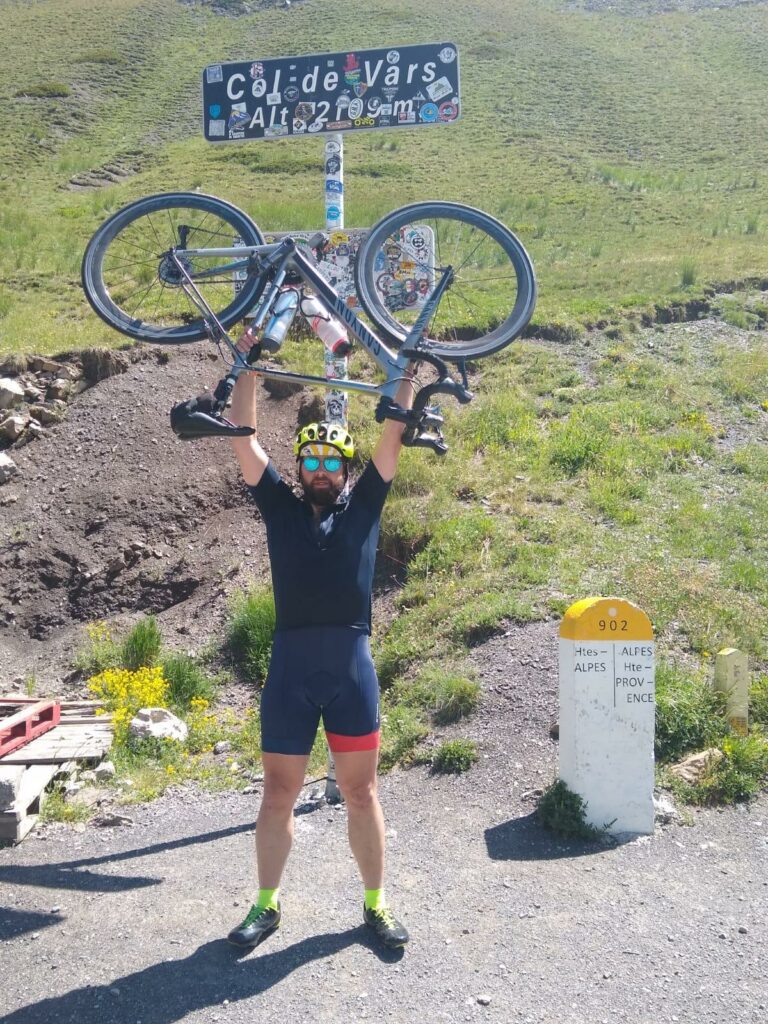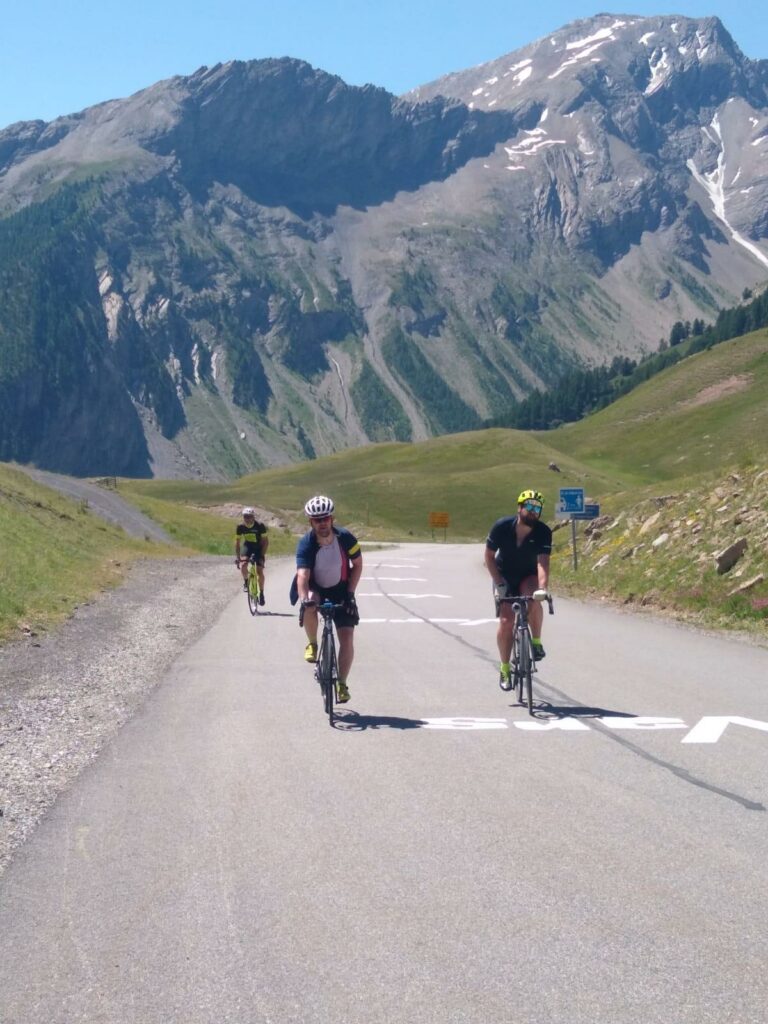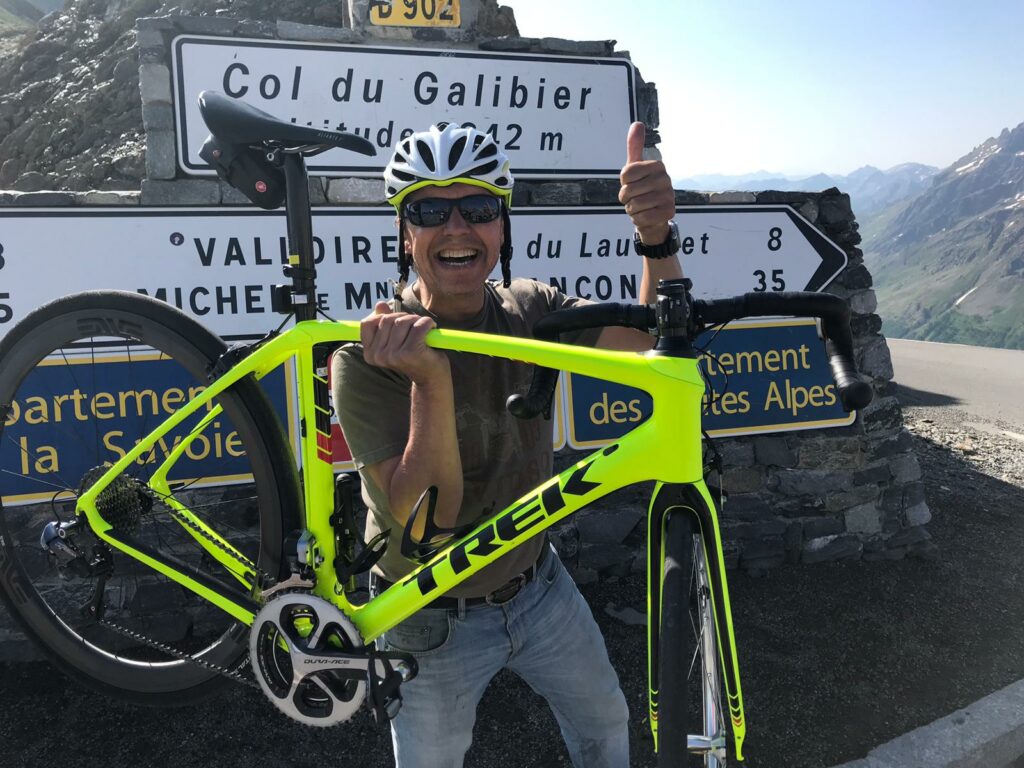With the flow of the third week they climb the giants of the Haute des Alpes. Col du Var (2100m), Col d’Izoard (2400m), Co du Galibier (2650m), Col du Telegraphe (1560m) and Col du Grand Cucheron (1200m). Two really challenging stages that demand everything from you and it really goes high up, as my photo on top of the Galibier conveys.

The amazing third week
They are now in the 3rd week of the Route de France. Which I want to highlight, because this third week is something very very special. If you’ve worked smart, rolling in the first week, increasing power in the second, not overdoing it, in other words, no red areas too often, your body starts to function like a perfect machine. And that feels fantastic, suddenly everything runs by itself. A feeling of perfection of movement sets in, you experience an ease and endurance as a matter of course, you think you can ride endlessly at this level. Psychologists have invented the word flow for this state. Besides all the experience of these beautiful and sometimes spectacular landscapes, the breathing in of the different moods of nature, the experiences in the mountains and much more. That’s what it makes to ride a Grand Tour, to go into this flow. Thus the third week remains forever in your mind.
Of course, this only applies to us hobby riders, not to racers. Although I can imagine that they also experience this flow. But compared to us, the racers are performing at their limit every day for 2 weeks now.
Now to the details of the last two stages in the Departement Haute des Alpes.
ETAPPE 14 – SAVINES-LE-LAC – BRIANÇON (1. JULI)
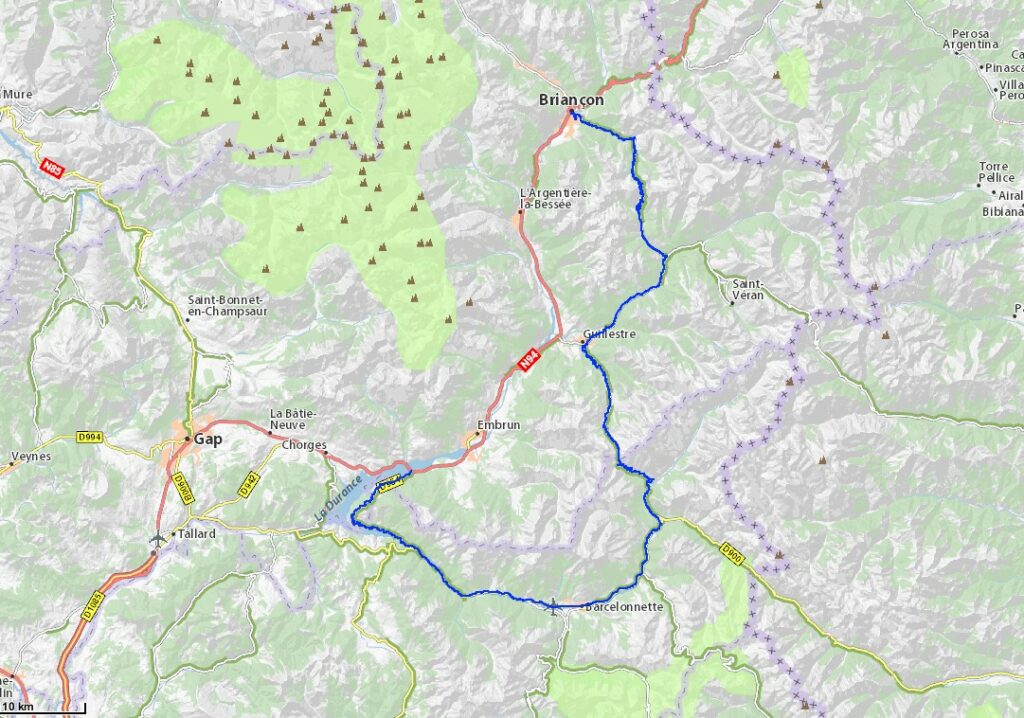
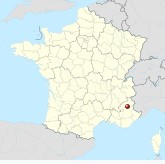
Regardless , how you look at it, this stage is impressive or terrible, spectacular in any case. 150 km and 3 big mountains to Briançon . This is exactly the route we’ve done at the 2017 Tour. It start to cope the Côte du Sauze (1040m), Col du Vars (2108m) and the Col d’Izoard (2420m), which demanded a lot from me the other day.
From Savines-le-Lac they gradually climbed around the headland of the Côte de Sauze (1040m) up to the gateway of the Mercantour National Park, here begin some of the highest climbs in the Alps. At Jausiers the route turns, into the Col de Vars (2108m), a gentle climb through alpine fields, often seen as a footnote to its giant neighbors, but which has been visited by the Tour over 30 times. From the top of its pass, it’s one of the most spectacular descents I’ve ever experienced. At the bottom, a canyon ride through the Queyras nature reserve to the foot of the Col d’Izoard (2360 m) awaits. You drive through impressive canyons with scree slopes and rock peaks above you. These “eyecatchers” make it difficult to concentrate on the road, there is so much to see, you can’t help but be amazed and still have to concentrate on the traffic.


And finally a flyover video of this impressive stage
Stage 15 – Brioncon – Saint Pierre D’Albigny (July 2)
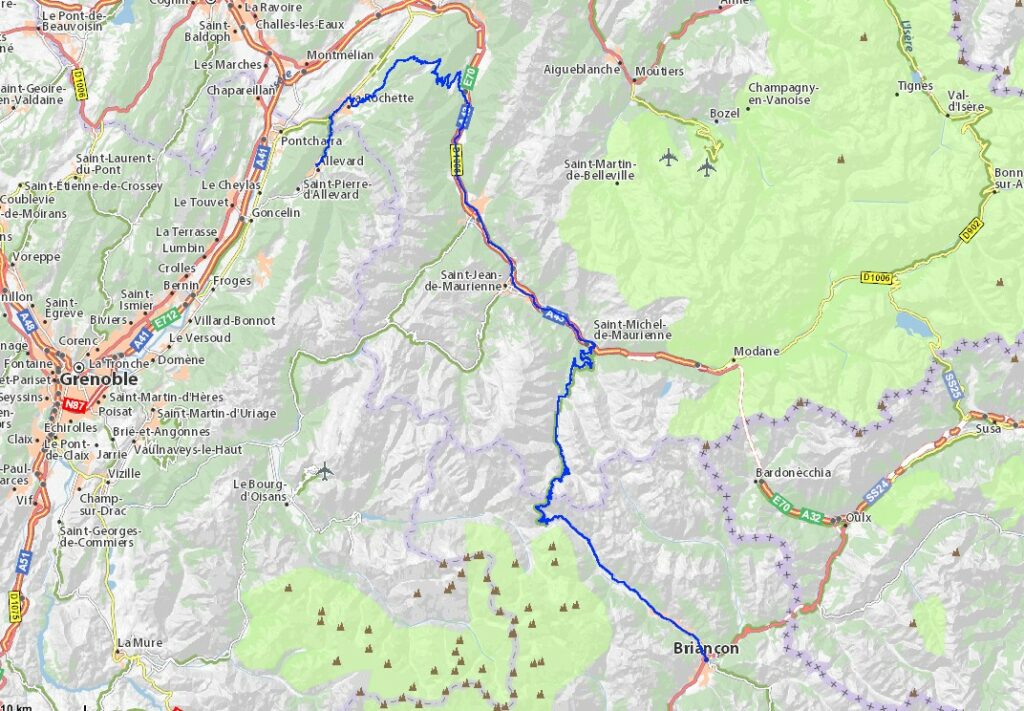
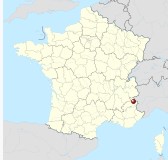
Right after yesterday’s efforts, today follows the last big challenge in the French Alps, it goes over 160 km over the giants of the department of Haupt Alpes, the Col du Galibier (2645m), Col du Télégraphe (1566m), Col du Grand Cucheron (1188m), Col du Champ-Laurent (1116m) to Saint Pierre d’Albigny. This time from the other side than in the Tour 2017.

They rode northwest of Briancon through the Guisane Valley and began the long and gentle climb to the Col du Lautaret (2058 m), last won by Joaquim Rodríguez in 2014. The Lauteret is known as the gateway to the Col du Galibier , the roof of the 1972 Tour at an incredible 2645 meters. Which was won by a long list of famous names, including Fausto Coppi, Frederico Bahamontes and Marco Pantani. Climber Luis Ocana consolidated his victory here in the absence of Merckx from 1973 and was also the scene of Andy Schleck’s famous solo breakaway in 2011, when he climbed twice to mark the 100th anniversary of Galibier’s first appearance in the Tour. From Galibier it’s a long descent down the Télégraphe to the river bend, which they followed for most of the afternoon before the peaceful alpine roads of the two lesser known “twin towers” from the 1972 Tour – the Grand Cucheron (1188m) and Champ-Laurent(1116m) brought this stage to a close.
They report the last big climb of this tour up to the Col de Galibier was harder than expected, but they all made it together and gathered them at the top for the triumphant group photo. The view was worth every effort to them.

Tomorrow is going to be much easier

Now the final sprint begins, there are only 5 stages left to Paris and they are now coming out of the high mountains. Somehow you are glad that you are the biggest Strapazen vorrüber and yet something melancholy rises that it now comes to an end. The next stage is about 155 km and only two “small” mountains the Col du Granier (1134m) and the Le Revard (1538m) in the French Jura to Bellegarde-sur-Valserine.
After a short descent to the Isère, we ride the lesser known Col du Granier (1134 m), visited 17 times by the Tour and led by Lucien van Impe in 1972. After a short break in the Savoy capital of Chambéry, we head uphill again toward Mont Revard (1538 m) in the Bauges Massif.Cyrille Guimard was back on the winning track in 1972, while the popular Jens Voigt led the peloton over the summit in 2013, and in 1998 the stage was unfortunately neutralized when the Festina doping scandals were made public. From the ski resort of Le Revard, it’s a slightly bumpy afternoon ride back to the Rhône and its confluence with the Valserine at Bellegarde, where much of the river’s water flows underground in a 60-meter-deep geological fault.
